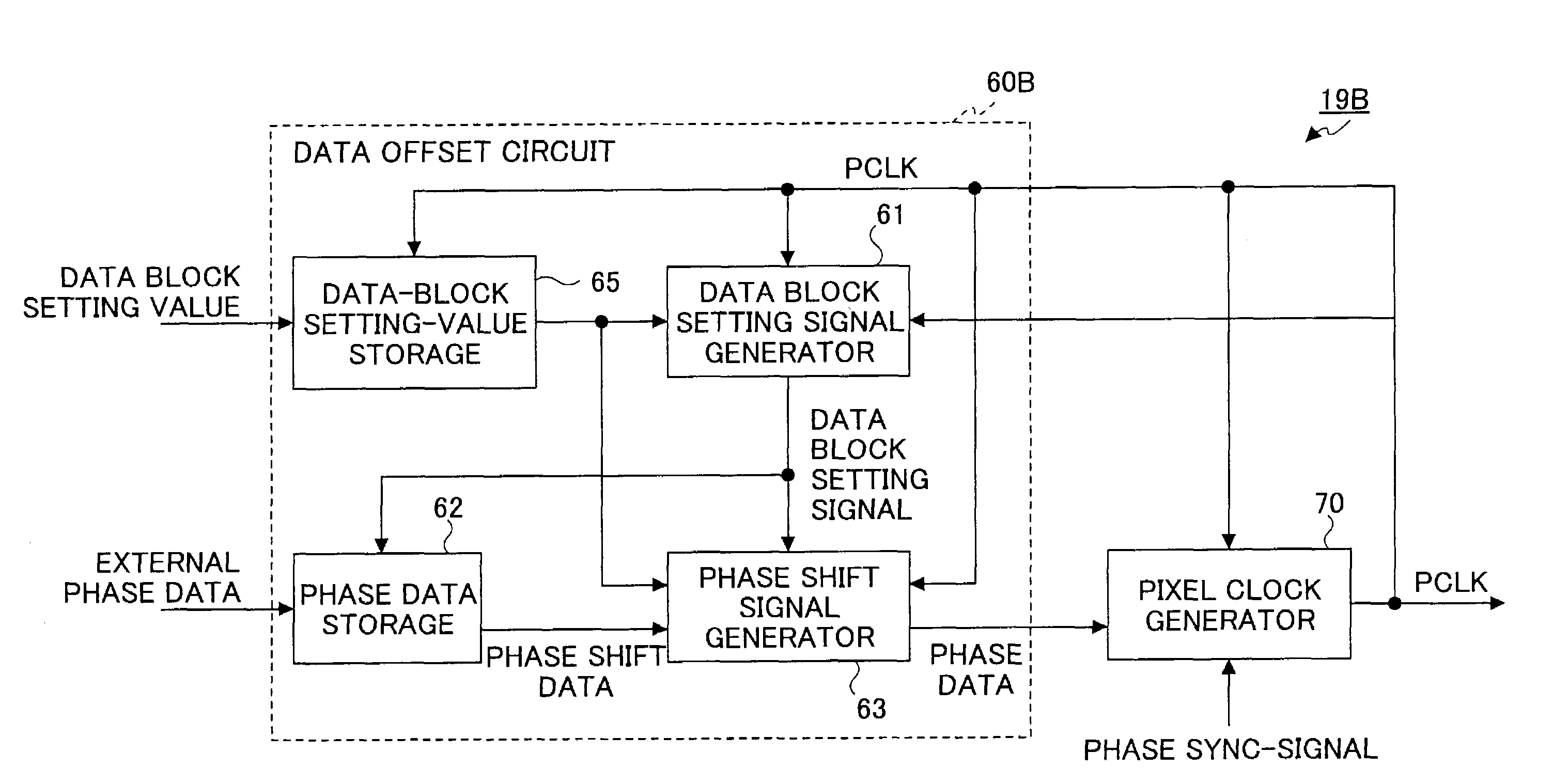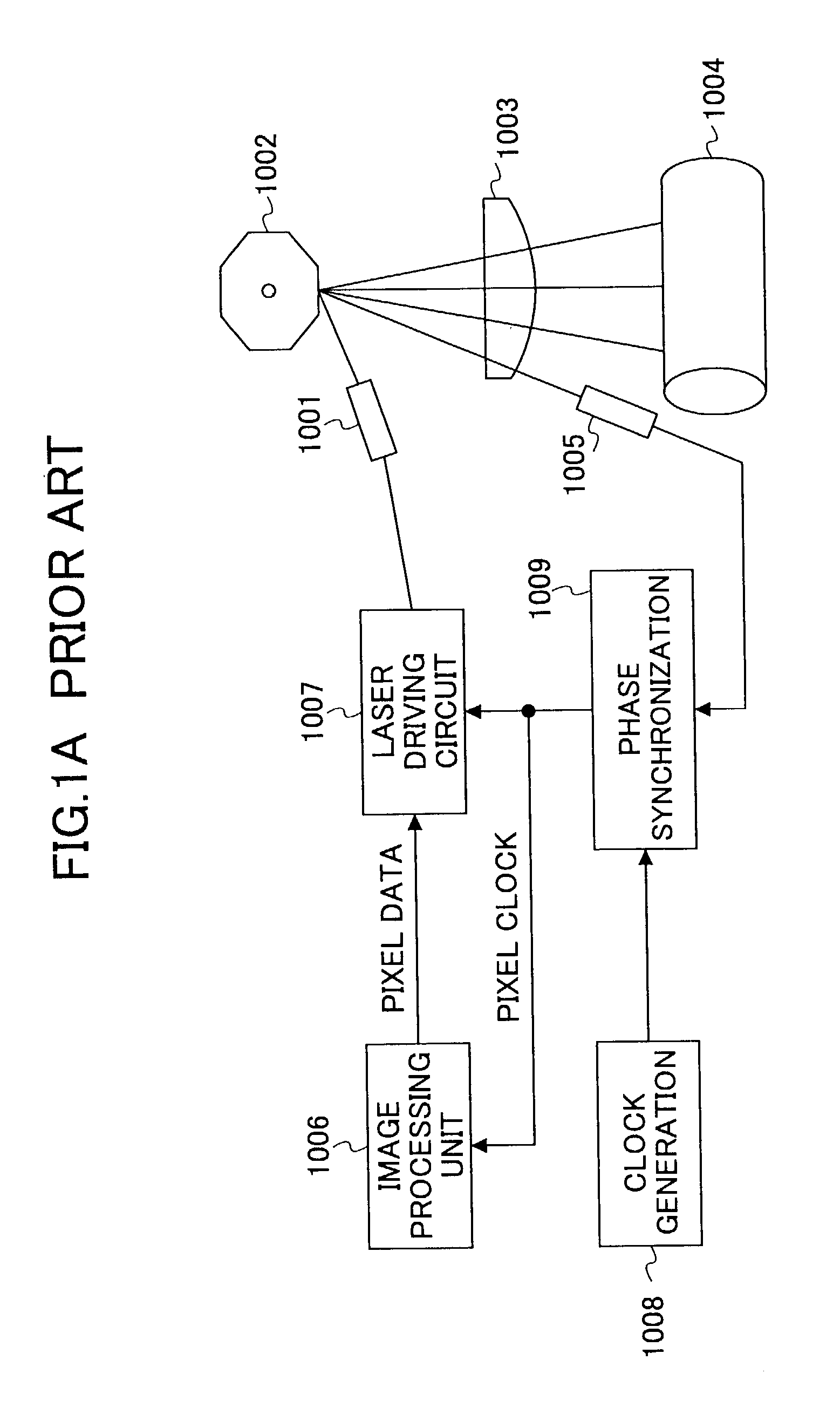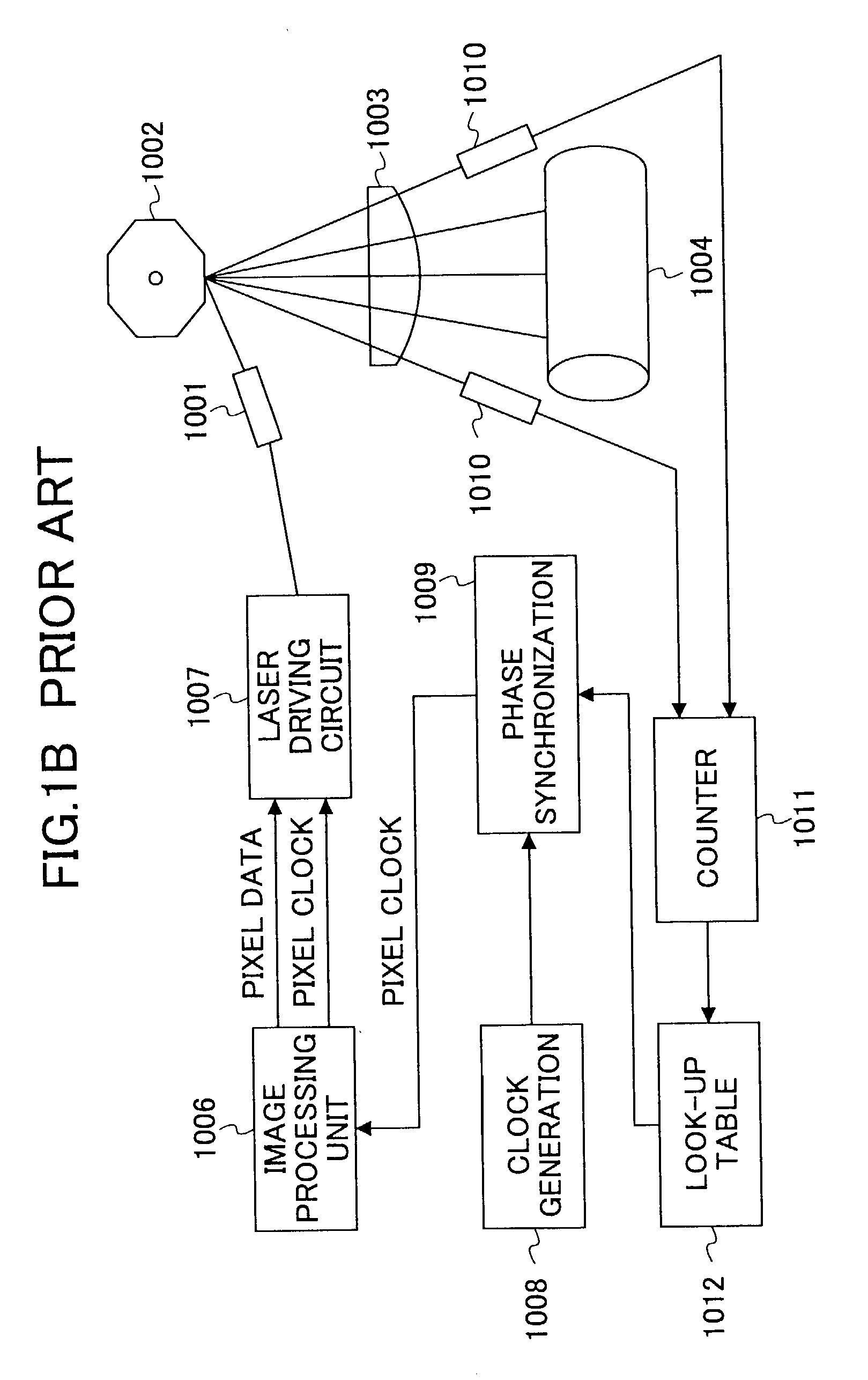Pixel clock generating apparatus, optical writing apparatus using a pixel clock, imaging apparatus, and method for generating pixel clocks
a technology of generating apparatus and generating apparatus, which is applied in the direction of inking apparatus, visual presentation using printers, instruments, etc., can solve the problems of image quality deterioration, image fluctuation, and image quality deterioration, and achieve the effect of reducing the amount of data required and high precision
- Summary
- Abstract
- Description
- Claims
- Application Information
AI Technical Summary
Benefits of technology
Problems solved by technology
Method used
Image
Examples
first embodiment
[0098]FIG. 3 illustrates a pixel clock generating unit 19A used in the optical writing apparatus 15 according to the first embodiment of the invention. In the first embodiment, the pixel block generating unit 19A divides the effective writing period (which corresponds to the effective writing range on the photosensitive unit) of the optical writing apparatus 15 into multiple data blocks to carry out phase shift correction for each data block. To realize this, the pixel clock generating unit 19A comprises a pixel clock generator 70, and a data offset circuit 60A that defines data blocks and provides appropriate phase data to the pixel clock generator 70 for each data block.
[0099]The data offset circuit 60A includes a data block setting signal generator 61, a phase data storage 62, and a phase shift signal generator 63. The data block setting signal generator 61 generate's a data block setting signal based on a data block setting value, that defines the number of pixel clocks PCLK con...
second embodiment
[0119]FIG. 9 illustrates a pixel clock generating unit 19B used in the optical writing apparatus 15 according to the second embodiment of the invention. The pixel clock generating unit 19B comprises a data offset circuit 60B, and a pixel clock generator 70. The structure of the pixel clock generator 70 is the same as that shown in FIG. 4A or FIG. 4B. The data offset circuit 60B includes data-block setting-value storage 65, in addition to the data block setting signal generator 61, the phase data storage 62, and the phase shift signal generator 63. The same elements as those shown in FIG. 3 of the first embodiment are denoted by the same numerical references, and the explanation for them will be omitted.
[0120]The data-block setting-value storage 65 stores externally supplied data region setting values, and reads a data region setting value at a timing of input of PCLK. The dot offset characteristic in the main scanning direction is measured in advance over the entire image height, an...
third embodiment
[0139]FIG. 16 illustrates a pixel clock generating unit 19C used in the optical writing apparatus 15 according to the third embodiment of the invention. The same elements as those shown in FIG. 3 and FIG. 9 are denoted by the same numerical references, and explanation for them will be omitted. The pixel clock generating unit 19C comprises a pixel clock generator 70, and a data offset circuit 60C that defines multiple data blocks in the effective writing range and supplies appropriate phase data to the pixel clock generator 70. The pixel clock generator 70 has the same structure as that shown in FIG. 4A or FIG. 4B. The data offset circuit 60C includes a data block setting signal generator 61, a phase data storage 62, a phase shift signal generator 63, and a data block setting period signal generator 64. The data block setting period signal generator 64 generates a data block setting period signal based on the externally supplied data block setting value that defines the number of pix...
PUM
 Login to View More
Login to View More Abstract
Description
Claims
Application Information
 Login to View More
Login to View More - R&D
- Intellectual Property
- Life Sciences
- Materials
- Tech Scout
- Unparalleled Data Quality
- Higher Quality Content
- 60% Fewer Hallucinations
Browse by: Latest US Patents, China's latest patents, Technical Efficacy Thesaurus, Application Domain, Technology Topic, Popular Technical Reports.
© 2025 PatSnap. All rights reserved.Legal|Privacy policy|Modern Slavery Act Transparency Statement|Sitemap|About US| Contact US: help@patsnap.com



